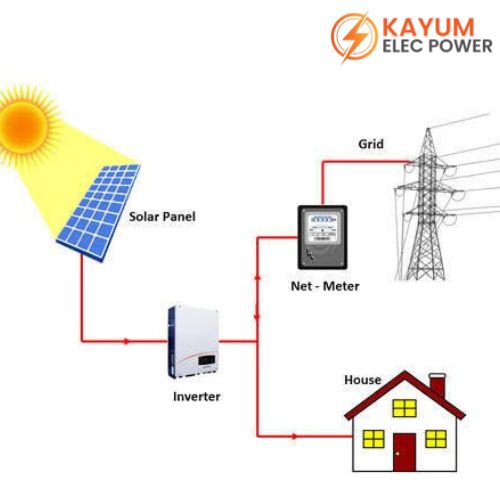
As Uttar Pradesh advances toward clean energy adoption, choosing the right solar power systems supplier becomes critical. From rural electrification to large-scale commercial installations, an ideal supplier provides reliable equipment, smart design support, and strong after-sales service. In this guide, we explore all you need to know—from system types and benefits to selecting the right partner and leveraging government incentives.
1. Why Solar Energy Makes Sense in Uttar Pradesh
Uttar Pradesh receives abundant sunlight, averaging 4-6 kWh/m²/day. This makes solar an optimal renewable resource for:
- Reducing electricity costs for homes, industries, and institutions
- Improving energy access in rural or remote villages
- Supporting government goals of net-zero emissions and solar capacity expansion
- Generating income, through net-metering or feed-in from surplus generation
With falling panel costs and supportive policies—including subsidies, tax breaks, and net-metering regulations—solar power has never been more accessible to UP residents and businesses.
2. Types of Solar Power Systems
2.1. Grid Tied Solar Systems
These systems feed clean solar energy into the electricity grid via net metering. The utility credits excess generation and supplies power when solar output isn't enough.
Advantages: Lower upfront cost, no batteries required, grid backup
Ideal for: Urban homes, commercial offices, small factories
2.2. Hybrid Solar Systems
Combining solar panels, batteries, and a grid connection, hybrid setups switch intelligently between solar, battery, or grid power.
Advantages: Backup during outages, improved energy control
Ideal for: Areas with spotty grid supply, data centers, clinics
2.3. Off Grid Solar Systems
These plants operate independently, using solar panels and batteries without grid connection. Commonly paired with diesel generators for full reliability.
Advantages: Full energy independence
Ideal for: Remote villages, telecom towers, agricultural pumps
2.4. Commercial & Industrial Solar
Large rooftop or ground-mounted systems (50 kW- 5 MW+) designed for factories, warehousing, schools, and more.
Advantages: Substantial electricity savings, corporate sustainability footprint improvement
3. Key Components & Quality Standards
To ensure system longevity and performance, pay attention to:
- Solar modules: Choose Tier-1 PV panels with high efficiency (>20%), positive tolerance, and PID resistance
- Inverters:
- String inverters: Suited for uniform-shade environments
- Micro-inverters or optimizers: Ideal for partial shading
- Batteries: LiFePO or maintenance-free VRLA batteries for hybrid/pump systems
- Mounting structures: Corrosion-resistant steel/aluminum, designed for local wind/water conditions
- Balance of system: Quality wiring, DC/AC isolators, earthing, and surge protection
- Monitoring: Real-time system data is essential for proactive maintenance
4. Proven Benefits of Solar Systems
- Lower electricity bills: Generate your own power and feed surplus to the grid
- Reliable energy: Avoid power cuts and surges with proper support
- High ROI: Payback periods typically range from 3–7 years—sometimes faster with net-metering
- Environmentally responsible: Reduce CO emissions and promote greener living
- Increased asset value: Solar roofs often add value to properties
5. Choosing the Right Supplier
When selecting a solar systems supplier in Uttar Pradesh, focus on:
| Criteria | What to Look For |
|---|---|
| Experience & Certifications | ISO, MNRE approval, installers with years of field experience |
| Product Partnerships | Reputable brands for panels, inverters, batteries |
| Customized Solutions | Tailored proposal based on load analysis |
| Government Handling | Knows subsidy procedures, documentation, grid regulations |
| Project Execution | Timely design, permissions, civil work, installation |
| After-Sales Service | Monitoring systems, warranty support, quick issue resolution |
| Finance Assistance | Helps with loan financing or leasing options |
| Local Footprint | On-ground repair crew and spare availability |
| Transparent Costing | Itemized proposals with no hidden charges |
6. Incentives, Net Metering & Subsidies
MNRE Subsidies
Under the KUSUM and rooftop solar schemes, residential systems may receive 30–40% subsidy if under 3kW, while commercial/industrial systems may get lower or conditional subsidies.
Net-Metering
Permitted in most UP states, allowing credit for excess solar generation. Ensure your supplier can assist with connecting to DISCOMs.
Tax Benefits
80EEB deduction on interest for residential rooftop loans, accelerated depreciation for commercial assets.
7. Trustees in the Field: Kayum Elec Power
One strong option is Kayum Elec Power, a UP-based solar supplier backed by a decade of experience. They offer panel/inverter sourcing, turnkey installations, MNRE subsidy support, and strong ongoing support—ideal for residential, commercial, and agricultural systems.
8. Project Cost & Return Analysis
Cost Breakdown (Indicative)
- Residential (3kW grid-tied): ¹1.8–2.4 lakh
- Commercial (50kW): ¹30–35 lakh
- Hybrid pump (5kW + batteries): ¹5-7 lakh
Payback Estimation
- Residential: 4–6 years with bill savings + net-metering
- Commercial: 3–5 years, depending on net-metering and subsidy
- Agricultural pumps: 3–4 years, with crop yields and government support
9. Installation & Maintenance Best Practices
- Site Survey: Evaluate shading, surface tilt, and load demand
- Electrical Design: Match system size to consumption profile
- Civil Installations: Ensure sturdy foundations and weather-ready construction
- Technical Deployment: Proper array layout, DC/AC wiring, earthing
- Commissioning: Gear up generation tests; grid/tie-in legalities
- Maintenance:
- Clean panels seasonally
- Monitor inverter performance and alerts
- Visual check for wiring heat or physical damage
- Warranty Management:
- 25+ years performance guarantee for panels
- 5–10 years for inverters, batteries vary by type
5 Frequently Asked Questions (FAQ)
Q1: What size system suits a typical family in UP?
A1: A 3–5kW system covers most household needs, depending on daytime usage and refrigerator/dryer appliance patterns.
Q2: How does net-metering benefit me?
A2: You export surplus solar energy during the day and earn credit. High consumption in evenings then draws from those credits, reducing your bill to the meter rent or fixed charge.
Q3: How often should solar panels be cleaned?
A3: Clean panels twice a year, especially after dust-heavy seasons. Dirty panels can lose 5–20% efficiency.
Q4: Will batteries significantly increase cost?
A4: Yes. Battery banks (especially LiFePO) add ~30–50% to system cost but are essential for hybrid/off-grid reliability. Maintenance-free VRLA batteries are more budget-friendly but shorter-lived.
Q5: How can I be sure of the system’s performance?
A5: Use real-time monitoring and follow a maintenance schedule. Check generation, inverter alerts, and net-metering statements regularly.
Conclusion
Solar power is a transformative solution for Uttar Pradesh—offering savings, sustainability, and energy independence. By choosing a reputable supplier who understands local conditions, process approvals, and offers robust support (such as Kayum Elec Power), you ensure smooth deployment and long-term benefits. With the right design, reliable equipment, and smart incentives, solar energy can be your top investment in a greener future.


